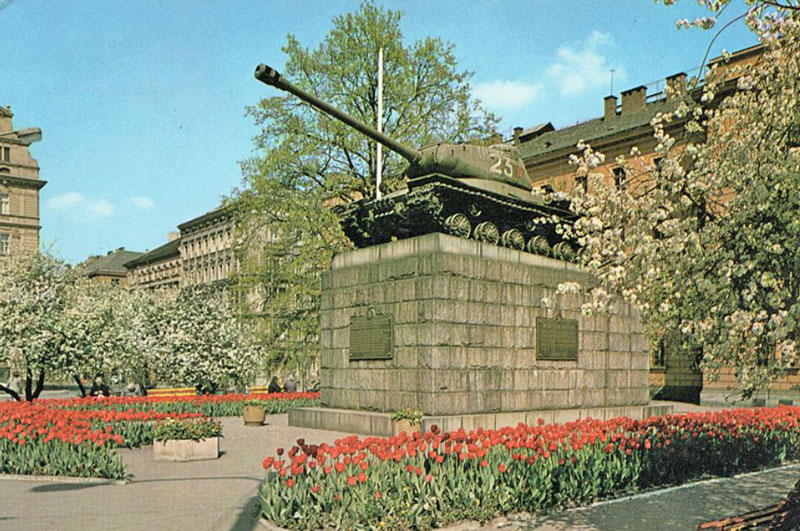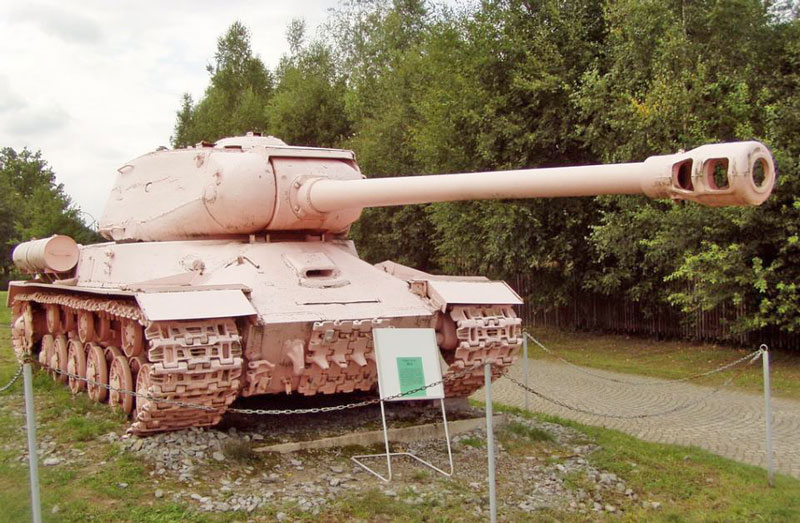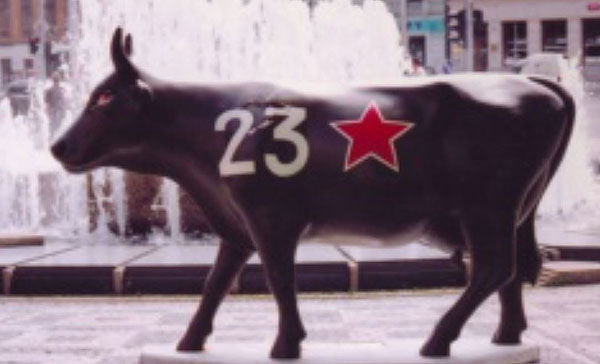Tank 23 – Memorial to Soviet Tank Crews
The story goes that on the morning of May 9th 1945, Soviet Red Army tanks entered Prague (fun fact – there is a memorial that marks where they crossed the Prague border in what was then the village of Liboc in Prague 6). The first tank was a T34/85 marked as I-23 commanded by Guard Lieutenant Ivan Goncarenko of the 4th Ukrainian Tank Army. Within 3 months the Soviet Army “Tankers” had their own memorial.

Where Was Tank 23?
It was an interesting choice of location on the border of the Lesser Town. More of a road junction than a square it had previously been known as Stefaniks Square and Kinsky Square as it was opposite the Kinsky Palace in that area. However in the time of World War Two it was an army barracks (maps will show the word “Kaserne”). This barracks housed Russian soldiers, not prisoners, these were soldiers of the ROA (Russian Liberation Army) who were not Communist and had actively fought against the Red Army in different campaigns.
So right outside the barracks they got German prisoners of war to construct a five metre tall stone pedestal onto which they drove an actual working tank to be used as the memorial which was formally unveiled on July 29th 1945 with the Soviet 5-point red star and the number 23. The memorial was given National Monument Protection status and in 1948 the square was renamed to “Square of Soviet Tankers”. Since 1990 it has reverted to it’s previous name Kinsky Square.
Alternative Facts
In the immediate post-war era, Czechs viewed the Soviets as liberators with the Story of Ivan Goncarenko entering Prague in the T34/85 I-23 Tank and being killed in the battle for Prague. So the memorial immortalised that tank……er not quite! Based on military records and first-hand witness accounts of May 9th, historians now point out that Tank 23 was not the first tank to enter Prague, Ivan Goncarenko was not in command of that tank and finally, the tank on the memorial was not even a T34/85. Instead they positioned a heavier IS-2 tank which was not used in the battle for Prague.
1956
Remember that earlier I said that they drove an actual working tank onto the stone pedestal. During the Hungarian uprising at the end of 1956, the Prague Communist authorities took the unusual step of going back to the memorial to remove the engine and certain firing mechanisms, just in case.
1991

Around 18 months after the Velvet Revolution had removed Communists from power people were questioning the relevance of the Tank 23 memorial. There are several monuments to the Soviet liberation of the city in WW2 but this one had been popular in Communist propaganda. So on the evening of April 27th 1991 an art student called David Cerny and some friends painted the tank pink (actually he did not finish painting because he ran out of paint but fun fact – the police guarding the Court of Justice waited for him to run out before they arrested him). The tank was then restored to it’s original colour before it was again painted pink on May 16th, this time by two members of parliament who had immunity from prosecution.
Bye Bye Tank 23

Within three years the status of “Protected National Monument” was revoked and the tank became the property of the National Army Museum. If you want to see it today it’s located about a 40 minute drive south of Prague at the Army Technical Museum in Lešany (Tynec Nad Sazavou). In 2002 the site was replaced with a fountain called the “Trapdoor of Time”
Other Ideas

In 2004 during the “cow parade” there was a plastic cow at this location with the red star and the number 23 as had been painted on the original memorial.


In 2008 part of a tank was embedded by David Cerny in the ground close to the memorial site and was originally painted pink but a fact that often gets missed is that when David Cerny positioned this version it had a white line running through the centre. These are called “invasion lines” and were used by Warsaw Pact forces during the military invasion of Prague in August 1968 which marked the end of the Prague Spring. This direct association of Tank 23 with 1968 sent a powerful message.
Something Related or a Few Minutes Away
History/WW2 – May 9th Memorials
History/WW2 – The Beneš Decrees
History/WW2 – Thomas Vokes and William Greig
History/WW2 – The Prague Uprising
History/Communism – The 1948 Communist Coup
Art and Culture – The Modern Art of David Cerny
